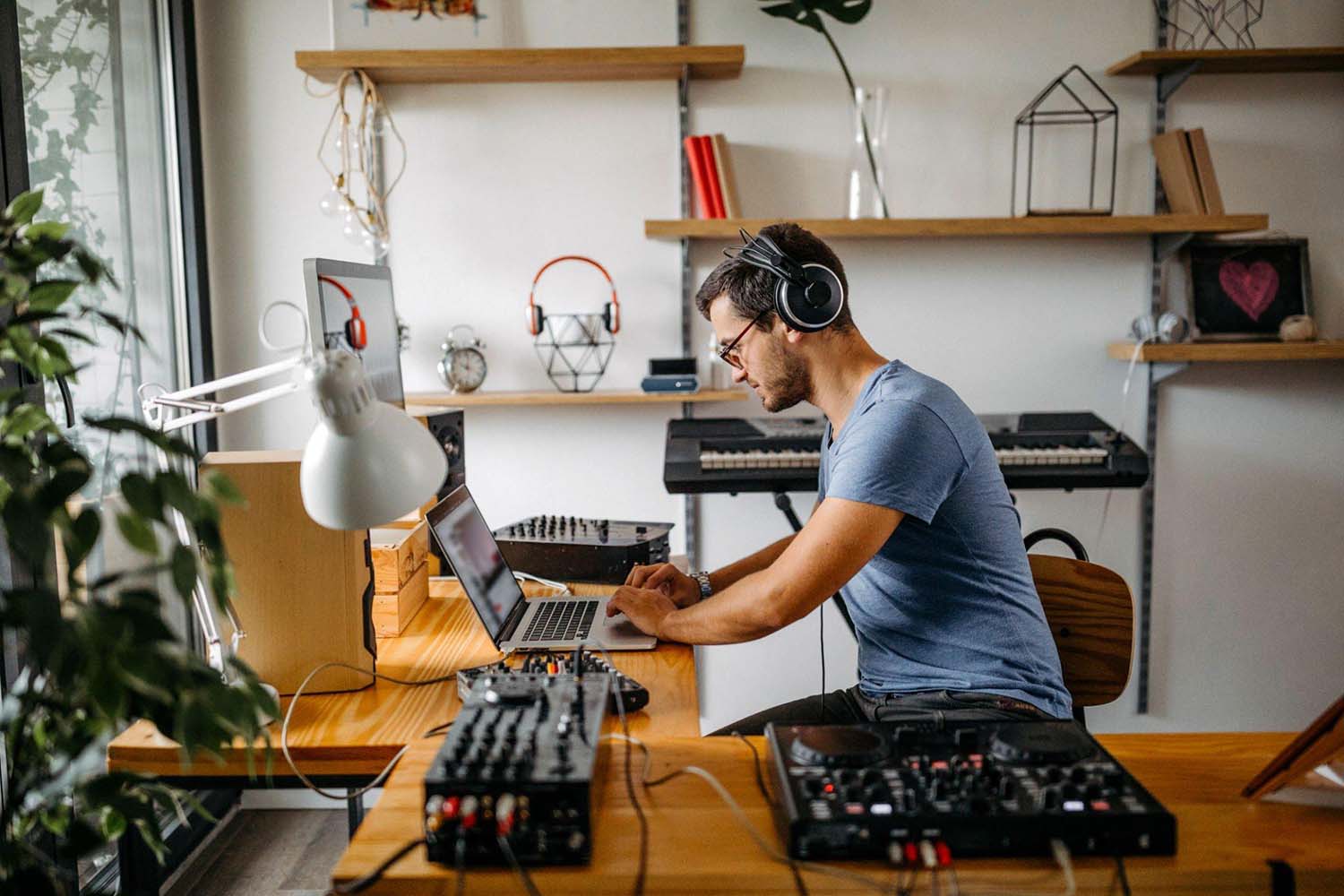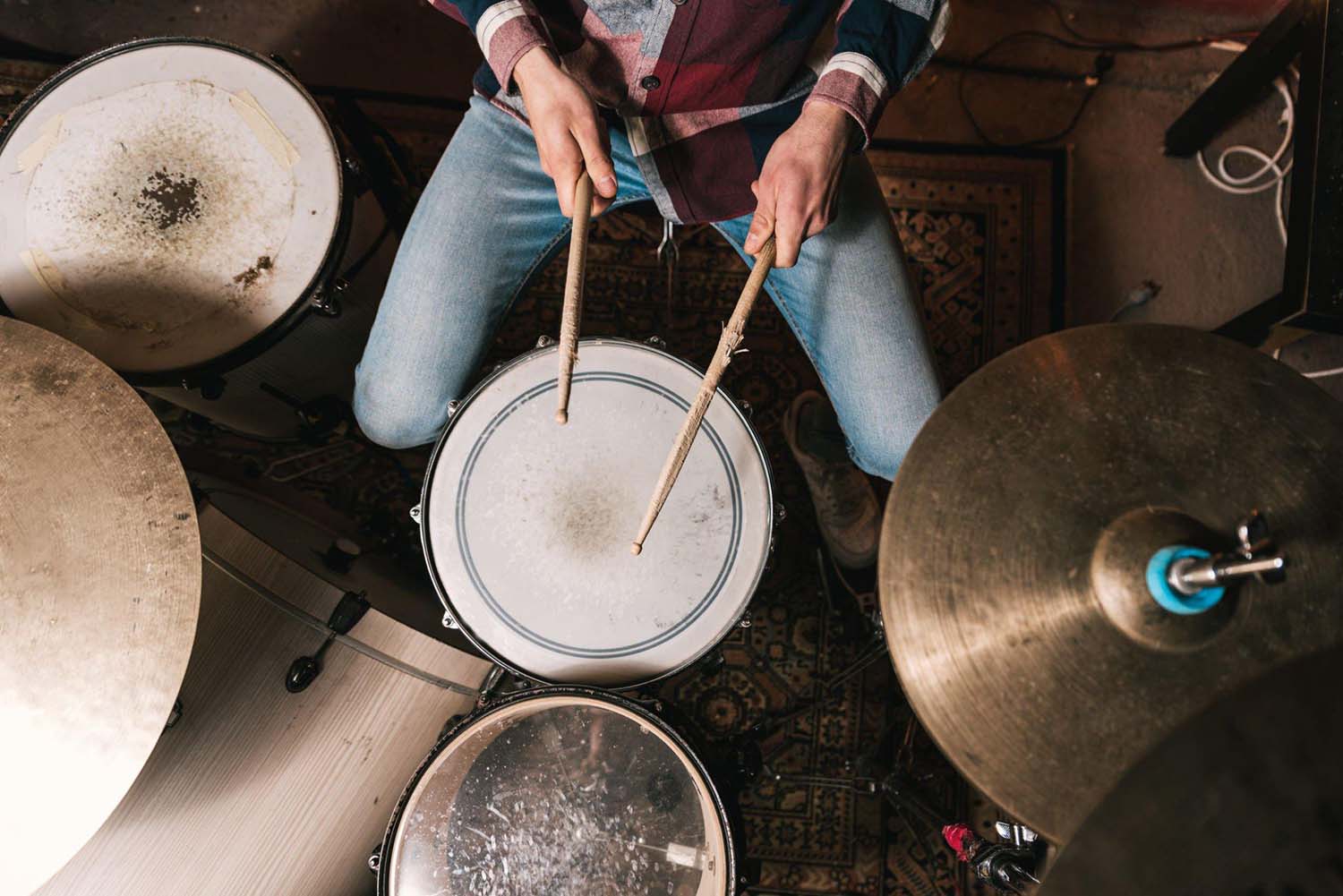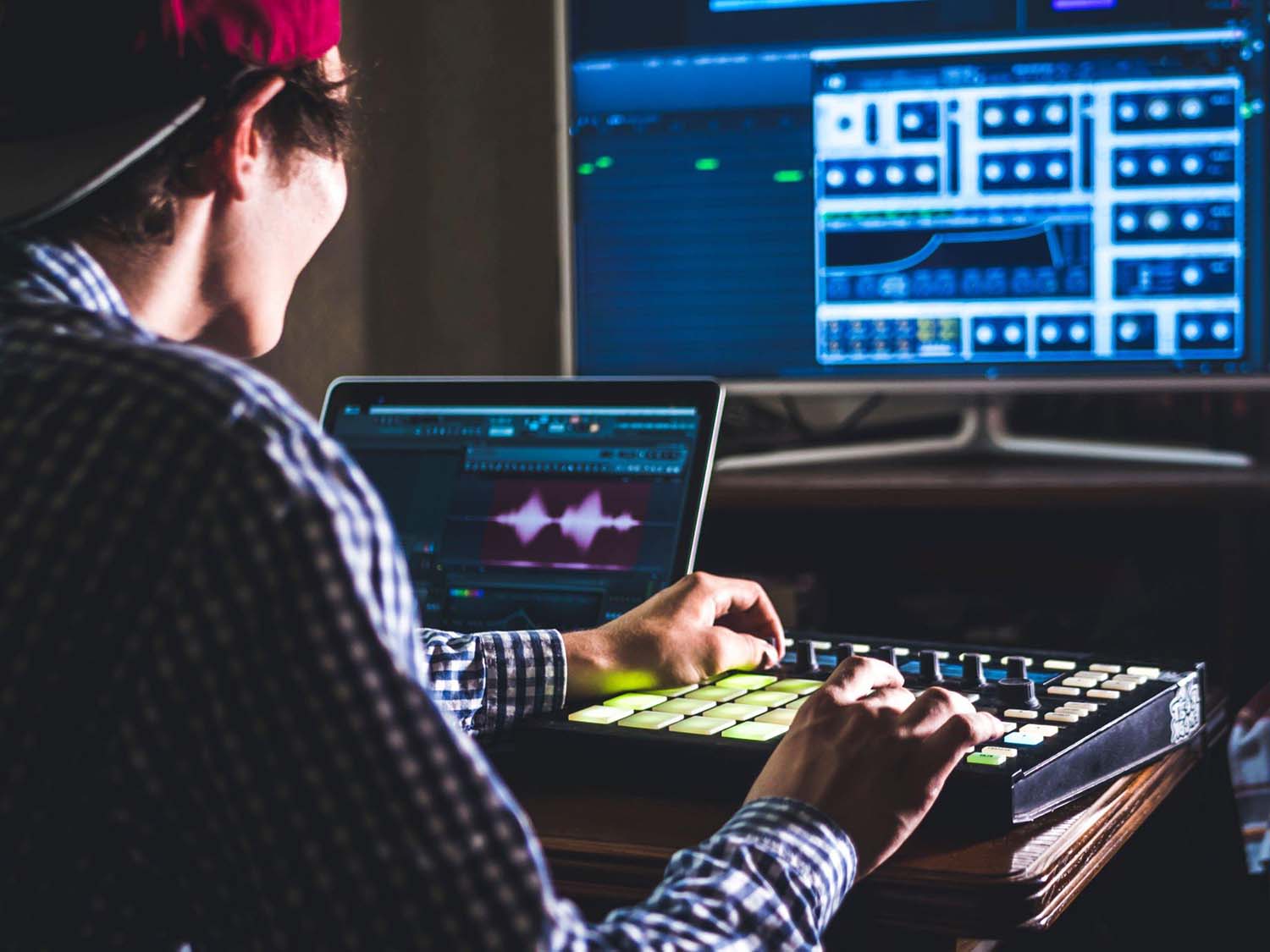Are you looking to learn more about creating professional-sounding music mixes and mastering the art of drum mixing? This guide will provide you with helpful tips and tricks on how to optimise your remote music production, make metal drum sounds, nail your drum set sound with overhead mics, and mix drums efficiently. We will cover eight simple steps to start mixing drums as well as strategies to take your drum mix from natural to aggressive in just a few steps.

Tips for Remote Music Production: Mixing Vocals
For music producers looking to create great-sounding songs from home, proper vocal mixing techniques are essential. Mixing vocals begins with choosing the right microphone for the job and setting sensible levels, which should be between -10 and -12 dB.
After that, precise frequency adjustment, compression, and reverbs are key for giving the vocal track depth and clarity. Additionally, using a de-esser can help reduce any harshness in the vocals, while setting up a limiter can help to keep the levels within a consistent range without making the vocals too loud. Another great tip is to use a sidechain effect when you want to trigger a vocal with a kick drum and emphasise the punchy tone of the drums. Overall, careful attention to levels, EQ, and effects can take a vocal track from good to great.
How to Make Metal Drum Sounds Using Drum Bus Mixing
If you want your drums to sound big and heavy like modern metal tracks, you need to learn how to use drum bus mixing effectively. Start by setting up your drum mixer with separate channels for kick, snare, toms, overheads, hi-hats, and crashes. Set each channel EQ to dial out any muddiness or boxiness from the frequencies, and then bring your drums alive with saturation and compression.
Once you’ve dialled in the sounds for each channel, it’s time to move on to the drum bus. Apply effects such as compression and distortion, or use extreme EQ settings to bring out harsh frequencies and create aggression. Finally, balance the levels of your kick, snare, toms, and other elements to achieve a powerful metal sound with punch and clarity. With these tips, you’ll be able to produce amazing metal drum sounds without ever leaving your home.

Mastering the Art of Drum Mixing: Tips & Tricks
Drum mixing can be a tricky task. It involves the careful combination of elements such as the kick, snare, tom toms, hi-hats, cymbals, and other percussion instruments into a cohesive, punchy, and musical mix. The challenge of making all the instrument sounds fit together without drowning each other out can be quite daunting. However, with a few simple tricks, such as balancing the frequency spectrum, mixing in layers, and playing around with effects, you can master the art of drum mixing and create some truly captivating and dynamic music.
A crucial part of the mixing process is to ensure that each instrument can still be heard clearly. This can be achieved by analysing the frequency content of each element before you start balancing, compressing, and EQing. Once you know what frequencies each instrument occupies, you can adjust each element and think of them in terms of individual instruments or as different layers. In addition, the use of processing such as effects, saturation, distortion, and reverb can help to create interesting textures and depth in the mix.
Moreover, don’t forget to use your ears and experience to determine what works and what doesn’t. With enough practice, you’ll soon develop a gut feeling for what sounds good in a mix. With experimentation, patience, and attention to detail, you can become a master of drum mixing and craft your own unique sound.
Nailing Your Drum Set Sound with Overhead Mics
Capturing a full and rich drum sound requires a few key ingredients, namely great mics and careful placement. If you’ve got an acoustic kit you’ll want to employ a few mics – like kick, snare, hi-hat, and overheads. Overhead mics are particularly important in capturing the full sound of a drum kit and should always be incorporated into your setup. To ensure the best possible sound quality, set up your mics at different distances and angles to capture the entire drum set.
However, it’s important to remember that microphone placement should be tailored to the type of sound you’re going for. If you’re looking to capture the details of your drums in a natural mix, then you’ll want to set your overheads further away.

8 Simple Steps to Start Mixing Drums
Making the perfect beat can be tough, and mixing the drums correctly makes the heart of the music. To help you get started mixing drums, here are eight simple steps. First, gather all your drum samples or stems and create a group bus, or an aux track, to control the overall drum mix.
Next, compress each of your drums, beginning with the kick, snare, and toms. This will help the drums cut through the mix and work together as one. After compressing, apply some light saturation to each of your drum sounds to make them glisten. Then, apply a high-frequency boost to each sample to sharpen them up and add clarity. Once that’s done, start blending all your drum sounds together using EQ and distortion. Lastly, add some subtle reverb to each of your drums before committing to the final sound. And that’s it! With these 8 steps, you’ll be ready to mix drums like a pro.
Taking Your Drum Mix From Natural to Aggressive in Just A Few Steps
Mixing drums in a way that sounds big and aggressive can be a challenge, but with the right steps, you can add intensity to your mix in a matter of minutes. The trick to taking your drum mix to an aggressive level is to refine your sounds and make sure they interact well with each other.
A good way to begin is to add a layer of parallel compression which will amp up the attack of your drums while controlling the signal’s dynamics. From there, it’s important to choose a slap or plate reverb, giving each of your drum sounds some space and a wider, fuller sound. Adding some saturation to the signal is a great way to give your drums more character and presence without overdoing it.
Finally, use Trance and Glue compression to control the level of each drum, as well as the mix’s overall loudness. With that, your drum mix should be aggressive and ready to go!
The Bottom Line
In conclusion, there are many tips, tricks, and techniques for remote music production, whether it’s mixing vocals, creating metal drum sounds, mastering the art of drum mixing, nailing a drum set sound with overhead mics, taking your drum mix from natural to aggressive, or even taking simple steps to start mixing drums. With the right knowledge and the right tools, anyone can become a master of music production.








